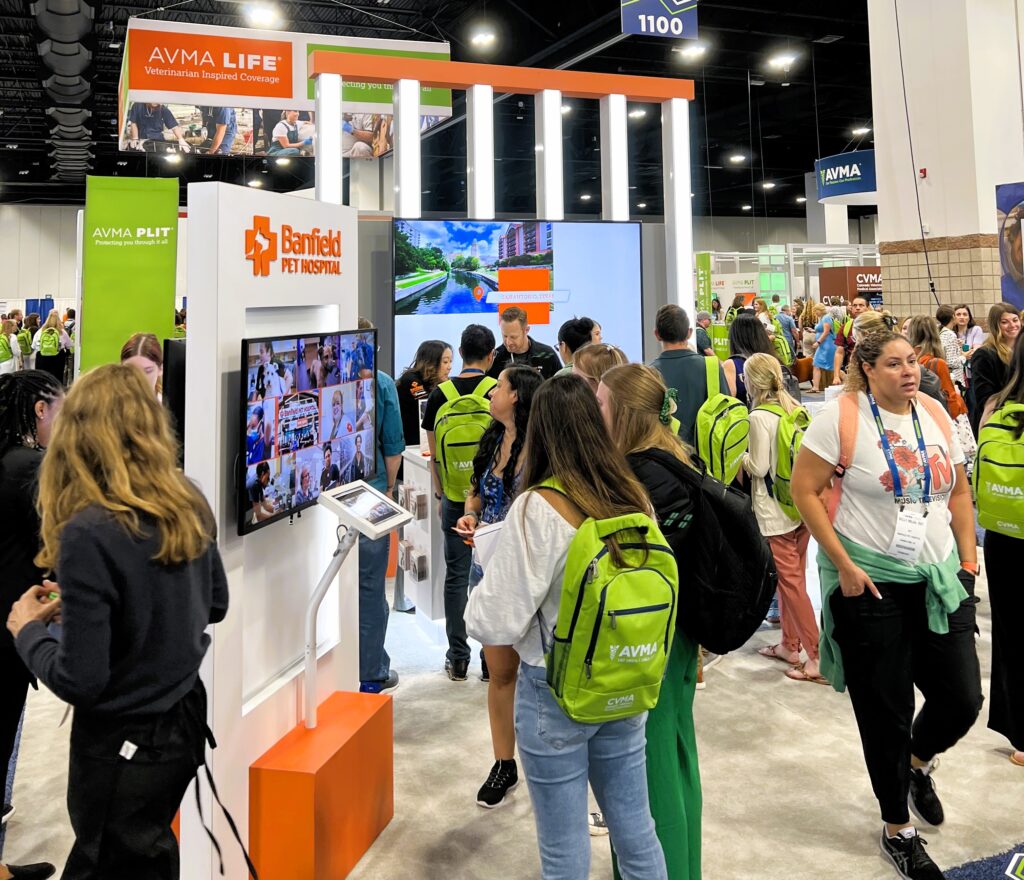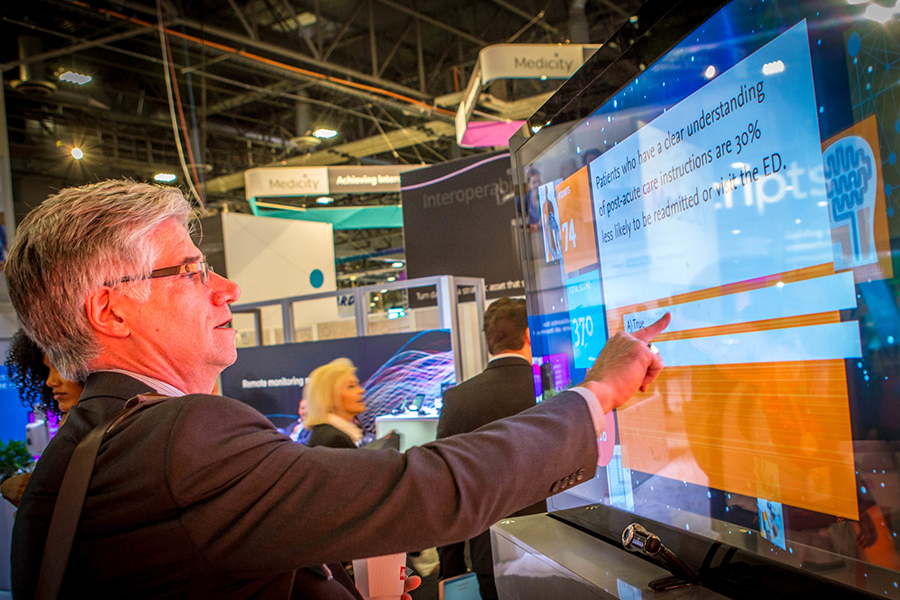In today’s fiercely competitive business landscape, where first impressions can make or break a deal, the significance of crafting a compelling exhibit booth cannot be overstated. Whether you’re a seasoned exhibitor or preparing for your first trade show, your exhibit booth serves as the frontline ambassador for your brand or product. It’s the nexus where marketing prowess converges with creativity, and where visitors transition from curious onlookers to engaged customers.
In this article, we’ll embark on a journey through the essential marketing considerations that will transform your booth into a powerful marketing tool. From defining your target audience to the integration of cutting-edge technology, we’ll uncover the strategies that can elevate your booth from being just a physical space to a captivating experience that leaves a lasting impact. So, let’s dive in and discover the keys to constructing an exhibit booth that not only grabs attention but also generates results.
1. Define your target audience
Before building an exhibit, it’s essential to know who your target audience is. Who are you trying to reach, and what are their needs and interests? This will help you tailor your exhibit’s content and messaging to meet the needs of your target audience. It will also help you to tailor an experience around them.
2. Define your objectives
Consider the goals of your organization and look at them in the context of your exhibit. Set goals for the event that are specific and measurable. For example, you might want to increase your hot leads by 10% over the previous year. Or perhaps your goal is to have 250 attendees walk through your experience, or to give one-on-one demos to 50 people. If your objective is to increase brand awareness, consider how you might measure that. Is it with an exit survey? Is it by measuring the number of impressions you make through your marketing efforts? The more specific you can be with your objectives and how to measure them, the easier it will be to tailor your exhibit to those goals.
3. Develop a clear message
Once you know who your target audience is and what your objectives are for your event, you need to develop a clear and concise message that communicates what your exhibit is about and what visitors can expect to learn or experience. This message should be prominently displayed in your exhibit’s marketing materials, such as email and social media campaigns, banners, booth graphics, and even giveaways and literature. Make sure that the physical booth properties are consistent with the overall branding of the company, products, and theme of your event. This consistency helps to reinforce the marketing message and make it more memorable for visitors.
4. Create an engaging experience
To attract visitors and keep them engaged, your exhibit needs to be interactive and visually appealing. Consider developing a theme for your event, or a slogan that ties together your brand with the experience you are creating for the attendees. Also look at incorporating multimedia elements, such as videos, soundscapes, and touchscreens, to create an immersive experience for visitors.
5. Consider visual impact
The physical booth properties can make a powerful visual impact that reinforces the marketing message. For example, a large, eye-catching sign or LED display can draw visitors to the booth and create a lasting impression. Make sure your brand is prominent at multiple elevations – eye level, up high, down low, etc. Optimize your booth graphics for accessibility. Use fonts, text, and image sizes that appeal to people with varying needs.
6. Incorporate interactive elements
Physical booth properties can be used to create interactive elements that tie into the marketing message. For example, a product demonstration area can showcase the benefits of the product, or a virtual reality experience can immerse visitors in the brand’s story. Utilizing touchscreen displays can offer opportunities for gamification and educational experiences. They can also serve as lead generation tools.
7. Pay attention to detail
Every element of the booth should be carefully considered to ensure that it ties into the marketing message and enhances the overall visitor experience. Think through the entire attendee experience and make sure that you have the properties to help facilitate that experience efficiently and effectively.
8. Honor company culture and professionalism
Physical booth properties should convey a professional image that reflects the credibility and culture of your company. This can be achieved through the use of high-quality materials and textures, well-designed graphics, and attention to detail in the construction of the booth. Make sure your graphics have been ironed or steamed before install. Wrinkled booth graphics are unappealing. Have your installation crew make sure that the SEG (Silicone Edge Graphics) is fitting into the frame properly to avoid pulling or sagging. All boxes and cords should be out of sight. If cord management is an issue, consider hiding them with a plant or floral arrangement. Remember that your booth is a physical testament to your brand.
9. Use social media and digital marketing
In today’s digital age, it’s essential to use social media and digital marketing to promote your exhibit. Use platforms like Facebook, LinkedIn, and Instagram to share information about your exhibit and engage with potential visitors. Use paid advertising to reach a wider audience and drive traffic to your exhibit. That can be through sponsorships or through geofencing the convention center and host hotels to serve up ads to attendees.
10. Measure success
Measure your performance against the objectives you set before the event. Use metrics like attendance, visitor engagement, and social media engagement to assess the success of your exhibit and make improvements for future events. From a functional perspective, analyze how well your booth properties helped you achieve your goals. Were there elements that could have been placed differently to achieve better throughput? Were all of the screens activated and did attendees engage with them? Was there enough room to give demos and move freely? Consider how you might improve your space to help you achieve better outcomes.
In the world of marketing, the importance of creating a captivating and effective exhibit booth cannot be overstated. Whether you’re participating in a trade show, conference, or any event where you aim to showcase your brand or product, your exhibit booth serves as the face of your company, and its impact can make or break your marketing efforts.
RECAP
Throughout this article, we’ve explored the key marketing considerations that should guide your journey in constructing an exhibit booth that not only grabs attention but also resonates with your target audience.
- Begin by emphasizing the critical role of understanding your audience and your objectives – a fundamental aspect of any marketing endeavor. Knowing who you want to attract to your booth, their needs, and their interests lays the foundation for a successful exhibit. Your exhibit should communicate, at a glance, what your brand is about and what value it offers. It’s your elevator pitch in a visual form, so make it count.
- Furthermore, we explored the concept of creating an engaging experience. In today’s world, interactivity and immersion are key to capturing the attention of your audience. The incorporation of multimedia elements can make your exhibit memorable and impactful. Online marketing can extend the reach of your exhibit. It’s not just about what happens on-site; it’s about building anticipation and buzz before the event even begins.
- Lastly, we touched on the importance of measuring success. Without clear goals and metrics, it’s challenging to know if your exhibit achieved its intended purpose. Tracking attendance, engagement, and social media interactions can provide invaluable insights into the effectiveness of your marketing strategy.
Building a successful exhibit booth is a multifaceted task that requires a deep understanding of your audience, a compelling message, engaging experiences, and a strong online presence. By considering these marketing considerations, you can elevate your exhibit game and leave a lasting impact on your target audience, thereby achieving your marketing goals. Remember, your exhibit booth is not just a physical space; it’s a dynamic tool in your marketing arsenal.
Related: How Immersive Experiences Make Lasting Impressions in Exhibitor Booths
At TPG, we complement your efforts and take the stress, time, and resources off your team’s plate to get the attention of audiences. Get in touch!



